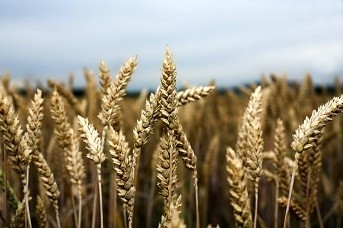The gluten-free diet “fad” may be unsustainable

In 2013, the number of U.S. adults following the gluten-free or -reduced diet reached new highs with almost 30% of Americans following it compared to only 25% in 2010, said Alessio Fasano, a medical director and director of the Center for Celiac Disease Research & Treatment. He added that according to research data from Mintel the gluten free food and beverage market reached approximately $10.5 billion in 2013 with millions of people following the diet.
“The gluten free market in 2004 was non-existent, but by 2008 it had become the most popular diet ever … forget about the paleo and South Beach diets” they do not compare, Fasano said.
But only about 1% of people are diagnosed with celiac disease and only 7% to 8% are gluten-sensitive and must avoid gluten for medical reasons, he said.
Why the rising interest in gluten free?
Part of the growth of the gluten-free diet is due to efforts by industry to educate consumers about celiac disease and to improve their eating options, Fasano said.
“When we started this journey 20 years ago, the gluten free products were awful in part because there was no market to support” researching and creating gluten free foods, Fasano said. “So we started this crusade to increases the celiac disease awareness, and we were so darn good at it that it went out of control with some people pulling the science out of context” and making unsupportable statements that gluten is toxic.
But in reality, gluten is not toxic for most people, although it can trigger an autoimmune response, allergy or intolerance in people who are predisposed and have a loss of function of the small intestine, Fasano said, adding, “We are not born with a destiny to develop celiac disease.”
There also “is a fad component of the gluten free diet” thanks to celebrities claiming to lose weight or cleanse their bodies of toxins by eliminating gluten, Fasano said.
He explained 55% of the more than 90 million Americans you who follow a gluten free diet say they do so because they think it is “healthier” and 27% do so to lose weight.
These are “junk” reasons and likely will not engender people to follow the diet for a lifetime, he said. He explained the extent to which a gluten-free diet might help some people lose weight or become healthier is if they cut out pizza and donuts or other unhealthy foods made with gluten.
Other reasons for following a gluten free diet include a desire to resolve gastrointestinal symptoms, cited by 10% of Americans on the diet, and a desire to resolve extra-gastrointestinal symptoms like foggy minds, cited by 7.7% of Americans on the diet, Fasano said.
In these cases, he said, people should seek medical care to be tested for Celiac Disease before they go on a gluten free diet and to identify other potential culprits.
An unsustainable trend?
Like most fads, the gluten-free trend “will pass, just like everything else,” Ana Sortun, chef and owner of the restaurant Oleana, said at the conference.
Chef Barry Maiden of Hungry Mother agreed, musing people love bread too much to stay away for it forever if they do not have a medical reason.
Another deterrent for long term compliance of a gluten-free diet if not medically necessary is expense, said Pam Cureton, a clinical/research dietitian at the Center for Celiac Research.
“Gluten-free foods can be three to five times more expensive than their wheat counterparts,” she said at the conference.
In addition, following a gluten-free diet can be difficult socially because people cannot eat what their friends and family eat and can feel like a burden if they require special accommodations, Cureton said.
Gluten-free creates subset of nutrition concerns
Sticking to a gluten-free diet also is difficult because it can create other nutritional problems that must be addressed, Cureton said.
“The gluten-free diet typically is missing some important nutrients … like fiber, iron, B vitamins, calcium and zinc, which can lead to iron deficiencies, osteoporosis and constipation,” Cureton said.
She noted a study of 47 adults who followed a gluten-free diet and reported what they ate for three days revealed 46% of the women did not consume enough fiber, 31% did not consume enough calcium and 44% were short on iron. The percentages approximately doubled for men for each nutrient in the study.
“There is a solution: Use alternative whole grains,” Cureton said of the shortages. She emphasized: “Gluten free does not mean grain free.”
She noted buckwheat, brown rice, amaranth, quinoa, teff and millet “bring a lot to the table in terms of repairing nutritional deficiencies associated with traditional gluten-free diet,” and can make the diet more sustainable for those who medically need to follow it.
[Editor's note: The story was amended to correct an earlier version that said 10.5 billion people follow a gluten free diet. The correct version states that the gluten free market in 2013 was worth $10.5 billion. Fasano estimates that more than 90 million people in the U.S. follow a gluten free diet.]










